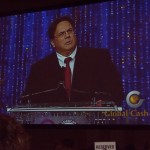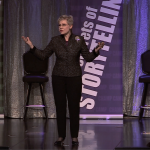Ask, Don’t Tell:
Using Power Questions to Engage with Prospects
By Andrew Sobel, coauthor of
Power Questions: Build Relationships, Win New Business, and Influence Others
One of my speech coaching clients and long time friends Andrew Sobel writes many great books. Enjoy this taste of Power Questions.
The CEO of a $12 billion company summed it up neatly when he told me, “When someone walks into my office and is trying to market to me or sell something, I can always tell how experienced they are by the quality of the questions they ask.”
A good power question helps you uncover a prospect’s most urgent needs. It cuts through the noise and gets right to the heart of the issue. It uncovers higher-level goals and aspirations. It shows, in the most convincing way possible, that you’re thoughtful and smart.
When you first meet with a potential client, you must establish your credibility and understand their goals. Our natural tendency is to do this by telling—by describing our company, our services, and the uniqueness of what we do. That’s boring.
The best way to build trust in your competence is to ask credibility-building questions. These are questions that implicitly demonstrate your experience while encouraging the client to talk about their issues. This is what the CEO was talking about.
It requires good upfront research and planning to develop strong, credibility-building questions. Your questions will vary based on your particular client and industry, but they should sound like these:
“How are you reacting to the new reporting requirements [i.e., to a trend or a new regulation]? Several of my largest clients have taken a wait-and-see attitude, but others are already conducting in-depth assessments…”
“Your CEO’s speech to last month’s industry conference certainly put a stake in the ground in terms of your international growth aspirations…how is this going to impact your talent acquisition and development efforts?
A credibility-boosting question, in short, explores the client’s issues while demonstrating your knowledge, experience, and preparation for the meeting.
A second essential objective with a prospect is to understand their issues—what I call their agenda. Every executive has an agenda of three to five critical business goals or priorities. Your job is to explore, understand, and add value to this agenda. One of the most direct agenda-sensing questions is, “How will you be evaluated at the end of the year by your leadership? What metrics will be used?”
A second type of agenda-uncovering question focuses on why. Clients often specify a particular intervention—“We need a training program” or, “We need coaching.” When they do, you must ask “Why?”: “Why have you decided that?” If you ask this, even four or five times, you will expose the underlying need or goal. By expanding the conversation you will expand the potential engagement.
Other agenda-setting questions could include:
“Where will your future growth come from?”
“How will you decide whether or not to…(make an important decision)”
“What organizational or operational capabilities do you need to strengthen in order to support your future strategy?”
“Who or what could be a disruptor in your business?”
“As you think about the future of your business, what are you most excited about? What are you most concerned about?”
Remember, one of the important ways you add value in a first meeting is by being thought provoking and helping your prospect think differently about his or her issues. Good questions are a great way to do this.
*****
Andrew Sobel helps companies and individuals build their clients for life. He is the co-author of the newly-released Power Questions as well as the author of the business bestsellers Clients for Life, Making Rain, and All for One. He can be reached at www.andrewsobel.com, where you can download a free set of Power Tools to help you get better at asking Power Questions.
If you would like to experience the coaching that helped Andrew
check out the Fripp LaCroix June Structure and Story and Coaching Camp.
Read More...





